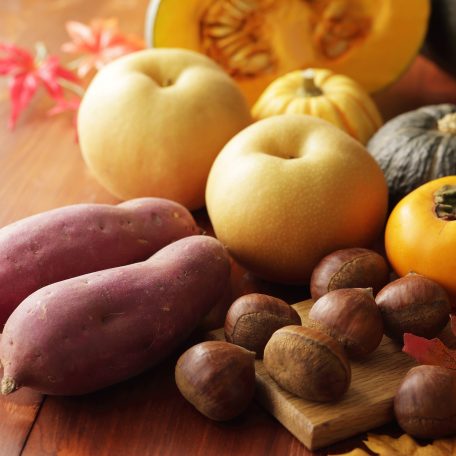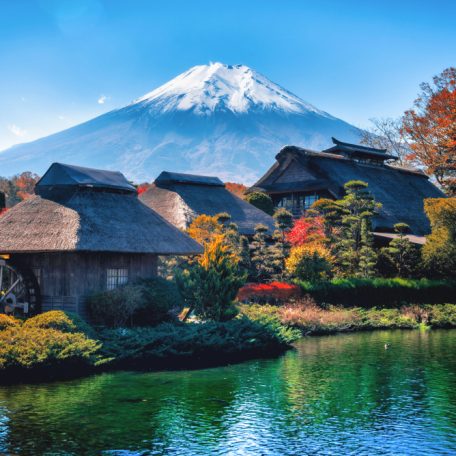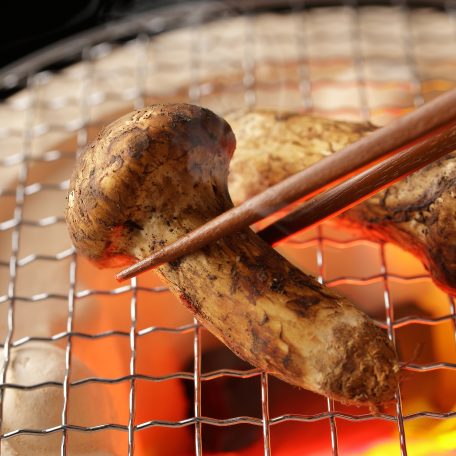From Spring to Winter – Fall in Love with Japan All Year Long
Sep 25, 2020
BY Denise Aoki

Have you ever fallen in love with a place on the first day you arrived? Well, Japan is one of those countries that you can easily fall in love with on your first trip, and I daresay that you can fall in love with the land of the rising sun not only once, but four times a year!
The reason is because Japan has four very distinct and beautiful seasons. Depending on the season, the colors, aromas, events and the food change so dramatically that it’s like you’re rediscovering the country each season. Let’s see why Japan is so great all year round. 
Spring
– March to May –
Some people say that the best time to visit Japan is during the spring. The temperatures are pleasant as the cold weather from winter gradually becomes warmer. Ume (plum) trees will bloom during spring, and then come Japan’s iconic sakura (cheery blossom) trees. The first sakura trees will begin to bloom during March in the southern regions of the country where the temperatures rise early, and the last ones will bloom during May in the northern regions.
During this period, you can try what is called Hanami, a cherry blossom viewing party where you enjoy snacks and drinks under the sakura trees with good company, or simply walk along the banks of a river appreciating the beauty of the flowers. It’s inspiring!
Signs of renewal, vitality and beauty that the flower symbolizes can be found everywhere: coloring the streets with their falling light pink petals, in stores as decorations, and in the food.
In addition to the traditional sakura mochi, pink sakura-flaroved treats, snacks, drinks and ice-cream are released in March for you to enjoy only during season. Other spring specialties that you can taste include bamboo shoots, spring cabbage, butterbur buds, and fiddlehead fern that you will find served as tempura, on your teishoku set lunch plate, or in the supermarket. And they are all delicious.
If you are a Matcha lover, then a matcha day trip would also be a great experience during the spring season. The best time to visit the plantations and get the best view of the landscape is also spring, right before the prime picking season for the early green tea leaves in May. Some of the most famous spots waiting for you are Makinohara Plateau and Imamiya in Shizuoka, or Ujitawara-cho and Wazuka-cho in Kyoto. You can join our Green Tea online tour to find out more in advance of your travels.

Summer
– June to August –
After the light pink from springtime, the colors of a Japanese summer become more exuberant and vivid. With the temperatures rising, the colorful summer atmosphere arrives. On top of spending time at beaches, people also get to enjoy colorful Yukata (a summer version of kimono made with cotton), Matsuri (festivals), Hanabi (fireworks) and summer food.
Matsuri are a great opportunity to experience local Japanese life through the processions of traditional dancers, parades of floats, and folk music. It has been estimated that approximately 200,000 matsuri are held in Japan every year, and during the summer, you will be able to find the greatest ones like the Gion Matsuri (Kyoto), Tenjin Matsuri (Osaka), Soma Nomaoi Matsuri (Fukushima), Aomori Nebuta Matsuri (Aomori), Awa Odori Matsuri (Tokushima), Sendai Tanabata Matsuri (Sendai), and Fukagawa Matsuri (Tokyo).
Another popular summertime activity is watching Hanabi. (fireworks) If you thought that you would find huge fireworks shows during New Year’s in Japan, then you will be surprised to learn that most of them typically occur in July and August. Traditionally used to ward off evil spirits, these brilliant nighttime spectacles are impressive and normally last around one to two hours! Some shows to watch for are Sumida River Fireworks (Sumida River), Omagari National Fireworks (Marukogawa River), Nagaoka Fireworks (Shinano River), Osaka Tenjin Fireworks (Ogawa River), and Miyajima Fireworks (Miyajima Island).

During Matsuri and Hanabi events, you will always find many food stalls, each of them offering something different. Takoyaki (Japanese ball-shaped breaded octopus snack), Yakisoba (stir-fried buckwheat noodles), Taiyaki (Japanese fish-shaped cake), choco banana (chocolate-covered bananas on sticks), Okonomiyaki (Japanese savory pancake), and Karaage (Japanese deep-fried chicken) are just some of the tasty foods that you can try while enjoying the occasion. Suffice to say, the must-try summer food list is long. You can also include Kakigori (shaved ice), Somen (ultra thin noodles made from wheat flour), Unagi (fresh water eel), Ayu (freshwater fish, usually grilled) and Suika (watermelon).
One last item on this list of summertime activities can only be done at a pretty famous spot. For those with an adventurous spirit, Mount Fuji will be officially opened for you to climb during the summer. After taking in the festivities and trying tasty food, why not climb the highest mountain in Japan and enjoy the amazing view from the summit? Before or after your climb you can join us for our Mt. Fuji Food Tour in the charming town of Fujinomiya.

Autumm
– September to November –
When autumn arrives, the vivid greens and blues of summer give way to a mix of red, yellow, and brown as the leaf colors begin to change, which is referred to as Koyo. The combination of these colors is so gorgeous that this phenomenon of nature opens up the possibility for us to enjoy magnificent sights all around the country. This is a unique opportunity to try Momijigari, the Japanese tradition of visiting areas where the leaves have turned red to look for the most beautiful among them.
As the atmosphere changes and the weather gets cooler, this comfortable season is perfect for outdoor activities. You can appreciate the autumn landscape while hiking, river-rafting, enjoying an autumn Matsuri, or even going to a Halloween party, an activity that is gaining popularity in Japan year after year.
The autumn freshness brings us comforting flavors, too. Seasonal ingredients like chestnuts, shinmai (freshly harvested rice), pine mushroom broth, grilled Pacific mackerel, pumpkin soup, sweet persimmons, seasonal sake and roasted sweet potatoes are just some of the tasty treats of this season.

Winter
– December to February –
As the temperature falls in Japan, winter arrives. Japan is cold during this period and white snowy landscapes become a common sight here. Wintertime in Japan brings many activities that are not available during the other seasons, such as skiing, snowshoeing and ice carving. The many places where there is abundant snowfall are perfect for enjoying winter sports like the Hakuba Ski Resort, Biwako Valley and Meiho Ski Resort.
After a day of having fun on snow-capped mountains, you can next experience something that you can only try in Japan: relaxing in an onsen (traditional Japanese hot springs). They are available year-round, but they are especially charming during the winter. The contrast between simultaneously being in the hot spring and in the cold air is something that can’t be described with words, especially if you are in an open-air onsen where you can sometimes literally feel the snow falling in your face while soaking in hot water.
If you want to add more color to your experience, the illuminations are another well-known wintertime attraction in Japan. These are light displays on city streets, gardens and parks. They are everywhere during this season and big ones like the Nabana no Sato winter illumination are especially impressive due to their magnitude and beauty. Other unique attractions are the snow festivals like the Sapporo Yuki Matsuri, a celebration where you will find huge ice sculptures, skating rinks, and gourmet food options for you to indulge in.
The cold weather makes us look for comfy warm places, and in Japan, that in itself is an attraction. After a long day of walking around and being impressed by the beautiful sights that winter brings us, being in a warm place and eating delicious food can become a little slice of heaven. How about getting toasty with hot nihonshu (Japanese rice wine), nabe (hot pot), oden (another one of the Japanese hot pot dishes), a big bowl of ramen or oshiruko (red bean soup)? If you really want to feel like you’re in paradise while eating your delicious meal, you can also try the kotatsu, a low table with a special heated blanket. The only thing I can say about the kotatsu is that you will not want to get out of it!
In Japan, the changing seasons bring more than just different temperatures; they also bring different characteristics, attractions, atmosphere and more to your trip adventure. Rediscover Japan through appreciation of the changing seasons that make the country a truly year-round destination and a remarkable place to make special memories.
PIN THIS FOR LATER
You still can’t decide which season would be the best for you? Where to go? What to do? Book a call with our travel consulting team in Japan and RELAX!
Book your pocket wifi now to stay connected through your entire Japan Journey!

Be sure to get the JR Pass to make navigating Japan during your trip that much easier!

YOU MIGHT ALSO LIKE




